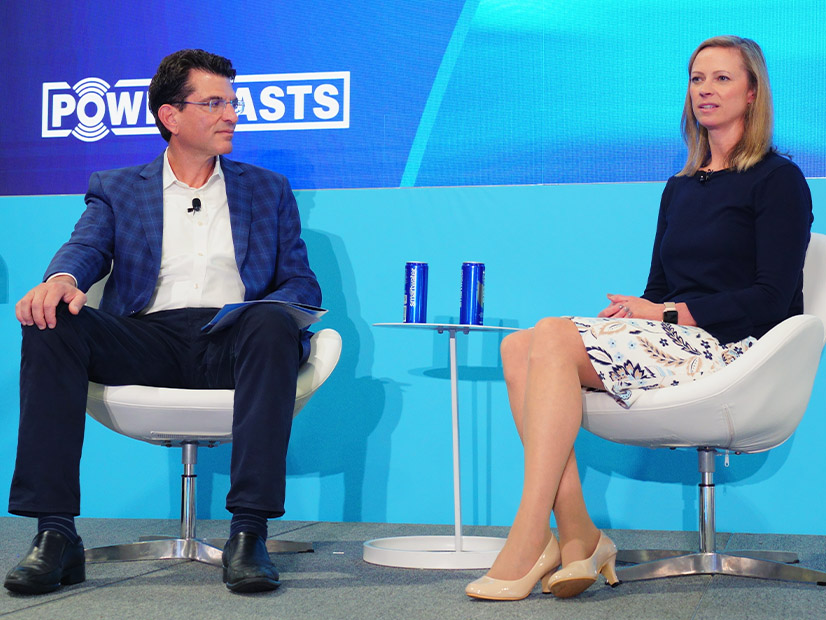
ATLANTIC CITY, N.J. — The company planning an 810-MW wind farm off the New York coast gave an update on its projects at Offshore WINDPOWER 2024.
The annual conference staged by American Clean Power offered a snapshot of the young U.S. offshore wind industry, from its setbacks to its triumphs to the potentially major challenges the upcoming presidential election could present.
Equinor’s Empire Wind can be seen as a microcosm of these fluctuations — it benefited from strong state and federal support, received key federal approvals, won a state Offshore Wind Renewable Energy Certificate (OREC) contract for both of its phases, saw that contract become financially untenable, severed the Equinor-bp joint venture behind Empire, put Phase 2 on hold and won a replacement contract for Phase 1 at a much higher $155/MWh.
Notably, Equinor has begun construction of what may be the most visible piece of offshore infrastructure in the nation: an offshore wind hub on the New York City waterfront.
Molly Morris, Equinor’s president of Renewables Americas, sat down with American Clean Power CEO Jason Grumet for an update.
“The South Brooklyn Marine Terminal is a 73-acre piece of land right in the heart of Brooklyn. It has the most amazing view of the Manhattan skyline,” she said. “About 63 acres of the land is what we call our staging port. So this is where we will house all the components for our turbines.”
Grumet noted that transitions such as the one underway in the energy industry are exhilarating at the start and satisfying at the end. It is the middle that can be hard.
Morris did not disagree.
“I will say that the last few years have been the hardest of my career — this has been an incredible journey over the last 24 months,” she said. “We hopefully have seen the inflection point and [are] starting to really see improvements. We see it a bit in the economics, although it’s still very challenging. So I don’t want to paint too rosy a picture.”
The new OREC contract was key, Morris said. “That gave us that launching pad, and really since then, it’s been full speed ahead.”
Grumet asked about the dichotomy within Equinor — it has been an offshore wind developer for 15 years but has been a major offshore producer of oil and natural gas for much longer. It plans to expand fossil production over the next decade and is “recalibrating” its portfolio of early-phase renewables to cut costs.
Morris herself spent more than 20 years in oil and gas, most of it with Equinor. She said the company has a strong commitment to offshore wind but also sees a decadeslong need for fossil fuel.
“We’re really trying to transition into what we call a broad energy company,” Morris said. “So we’re expanding into low-carbon solutions, which is hydrogen, carbon capture and storage, and, of course, renewables.”
Grumet noted the optics of this.
“There are certainly some advocates who don’t like the fact that companies with fossil histories are actually leading the clean energy transition,” he said.
“We have people within our own company that don’t love that we’re trying to build renewables, and that’s OK,” Morris replied. “We also have people who work in renewables that don’t like that.”
Grumet also noted the value that experienced, well-capitalized companies (such as oil majors) can bring to a new power sector.
“We love to build very complicated things offshore, and this is what we have done for decades,” Morris said. “So we’re trying to use that strength that we have and bringing that into the offshore wind space.”
Grumet asked how Equinor’s early offshore wind efforts overseas 15 years ago compared to its attempt to get up and running in the United States.
“Of course, with any new industry, you’re going to have challenges,” Morris said.
“There are some fundamental differences between Europe and the U.S. in terms of transmission and points of interconnection, so that is slightly different. I will say, though, the project director that we have for the Empire Wind project, he is a Norwegian, very experienced project director, and he always says to me, ‘There’s the U.S. factor that does make things more challenging.’ And again, I think it’s just being in a new industry that needs to work through the kinks.”
Grumet noted the impending potential for a “careening federal political environment” and asked Morris for her assessment of state politics.
“Overall? Very positive,” she said. “You know, the states really are who are driving offshore wind right now. They’re the ones that are putting solicitations up. They’re the ones setting climate targets. We have a very strong partnership with New York state, where we have our offtake for the Empire project.
“It hasn’t been easy on either side, but there’s very strong commitment from New York, from New Jersey, the entire East Coast, and I think that has been critical.”
An Equinor spokesperson said later via email that Empire Wind 1 has been sanctioned internally and a final investment decision is expected this year, after financing is finalized. Equinor also is seeking a partner to replace bp.
The Brooklyn project already is in progress and is a major undertaking. Equinor has not publicized its budget, but Skanska, the construction manager, has said its contract alone totals $861 million. More than 1,000 people have worked on the site in the past six months of construction.
Preparatory work has begun there for Empire Wind’s point of interconnection, and most work on the port itself is expected to be complete by the first quarter of 2026 — in time to receive the first shipment of turbines from Vestas and perform pre-assembly work in preparation for their installation offshore starting in the summer of 2026.



